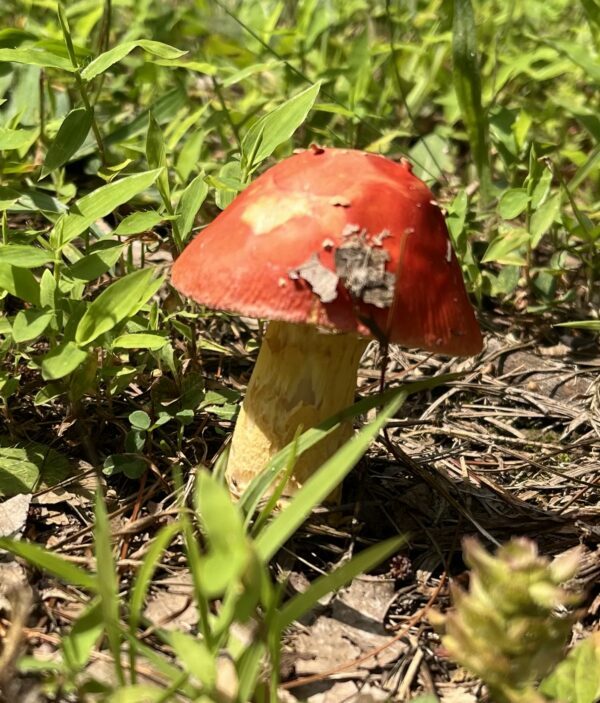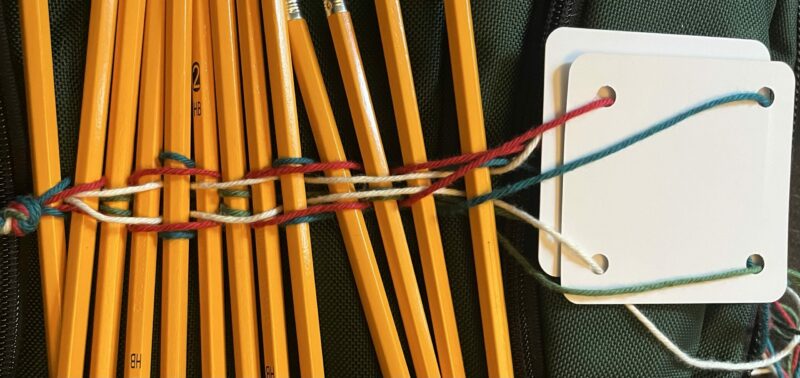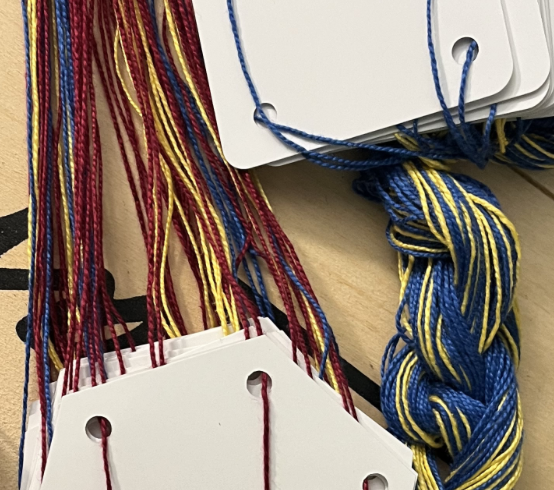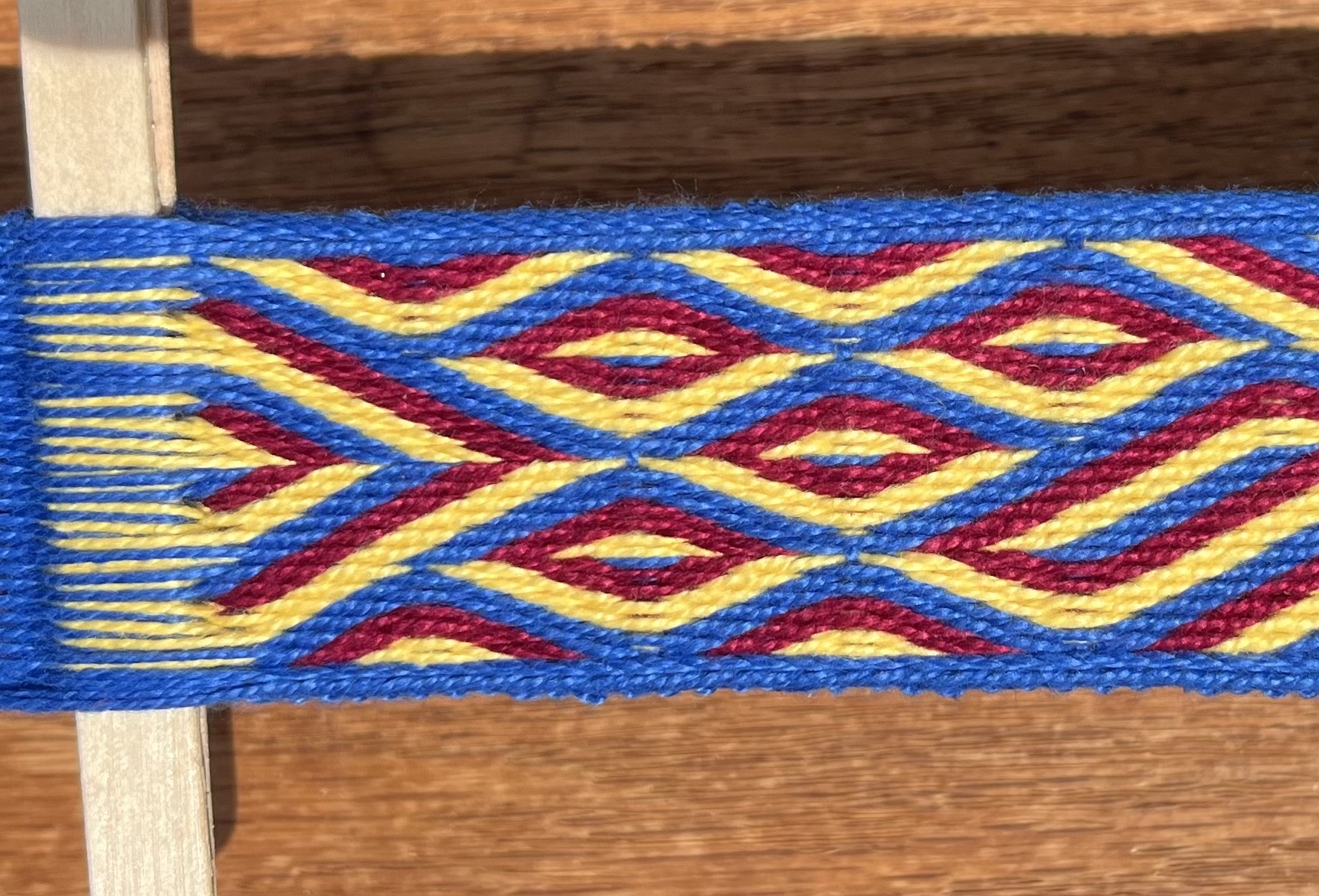First I decided that I wasn’t going to mess with acid dyes on silk anymore because I was having such problems. But I like using acid dyes more than fiber reactive dyes, and I’m getting excellent results on wool, so I thought I’d try one more time.

I’m getting good color depth, finally, (even in a bad photo) with the addition of way more citric acid than anyone would expect, plus some sodium hexametaphosphate (a water softener). I live in central Pennsylvania; the stuff that comes out of my tap has more in common with liquid limestone than it does distilled water.
What you can’t see in the photos is that those still aren’t rinsing clear in cold water. I know you can’t get a clear hot water rinse with certain acid dyes, especially on silk, but everything has to rinse clear in cold water or I can’t sell it. And that’s after many rinses.
Grrrrrr.
I got a very good strike – the fiber took up just about all of the dye, leaving a nearly-clear dyebath. But as soon as I put the yarn in a cool rinse, it lost a lot of the dye that had apparently bonded. The rinse water was far darker than the dyebath! I’m not using water softener in the rinse – that’s the next thing to try. I’d like this to work without major efforts on my part.
I know it’s not the silk itself. It takes fiber reactive dye readily, so it isn’t gummy, or starched, or anything like that.
My dyeing methods work just fine on wool, even without the water softener (and with a hot rinse).
I think it must be the water, and silk must be more sensitive to hard water than wool. I have to make stock solutions with distilled water or all kinds of nasty things happen (learned the hard way. Cherry red congeals, while sun yellow precipitates in strings. Ick!). But I can’t practically use distilled water for everything including rinses. Cross your fingers for me that water softener in the rinse water helps, and if you have any suggestions please leave me a comment.
Having gotten hooked on spinning the silk cap, I also threw a couple more in the oven with the last of a couple of stock bottles splashed on.

These are for me, but they’re fun to dye so I might do up a few for sale.






7 responses to “Silk”
Are you steaming to set, or simmering?
I’m wondering if the dye is striking, but not setting… you’re right that some will still wash out from certain colors, but it seems like it shouldn’t make the rinse water darker than the dye bath.
I am very interested in DEEP REDS and blues that are like OLD LAPIS LAZULI. snow white also. The slik cord I use as back9ng cord with a little real gold, or now GoldFIll wire. The red shows thru slightly and lustres the gold, blues and white I use with silver. And it fattens up the necklace too, get a beautiful necklace with half the silver or Gold
I don’t know who I am writing to actually, Sarah or Phiala. I am an old time machinist/welder/metals guy and curiously enough an acquaintance is pressuring me to make him a two handed sword. 5′ bade 8′” handle, nickel-silver hands protector, ray skin leather for grip(over wood) pommel of cast bronze(up to a pound I can do)(blade is of course dense wood) Problem: he doesn’t understand $$$$$ for mat’ls and 30-60 hours of my time!!!
George Harter
the bloodier the red the better, I am using often, german made(GRYPHON??) cord and sometimes Chinese stuff which I believe is faked somehow.
the more LAPIS color the blue, the better!\
George
Michael, I’m simmering, and for fairly long times, at least an hour for these three. I want solid colors, so am using immersion dyeing – simmer for a while, then cool in the dyebath. I know that minerals in the hard water can interfere with the dye taking, but I’ve put all kinds of stuff in the dyebath to prevent that. It’s incredibly frustrating to get a very good strike, and promptly lose all the dye in the rinsewater!
George, Sarah is my legal name and Phiala is the name I use online and other places, in large part because there are so many women named Sarah that it’s easy to get confused about who is who. “Phiala” is nearly unique.
I know these samples aren’t as dark as what you wanted, in part due to the problem with the dyefastness. I still need to get some of the kinks of using very hard water worked out. The sword sounds interesting – my partner is a swordsmith and knifemaker.
Hi!
Portland has nicely-balanced water; the silk dyeing I did at OCAC, using Procion Fiber-Reactive dyes, I did in cold water baths. After it dried, I usually steamed it–and even then color would run, but not as much as it sounds like your pesky silk does. Also I was dyeing fabric bits.
Have you tried filtering water with a Brita or Pur filter or something of that ilk? Or don’t those take out your problematic liquid limestone?
I really need to get supplies soon, because I wanted to dye stuff this summer, when I could keep a lot of the mess out on the balcony…
Laura, I have very little trouble with the fiber-reactive cold water dyes. But I don’t like them as much! The acid dyes are the ones that are a problem, and they are entirely different to work with, and contain different pigments. The fiber-reactive dyes are much less sensitive to water chemistry, although very hard water can still interfere with the dye bonding to the fiber.
I don’t have a big enough filter to do all the rinsewater, but I’m next going to experiment with using water softener in the rinses as well as the dyebath.
Acid dyes, duh. I did read that, but it obviously did not make it to my brain. I’ve only used acid dyes once, and ended up with distressing sherbet-colored wool. If I ever use them again, I will consult you first. :)
It’ll be interesting to see what happens in your further experiments with the persnickety silk. I can see having water issues in the dyebath, but I wouldn’t have thought about rinse water affecting it. I’m glad you’re the one doing all the messing around, not me! The colors are so pretty, it’s too bad they’re being such a pain.